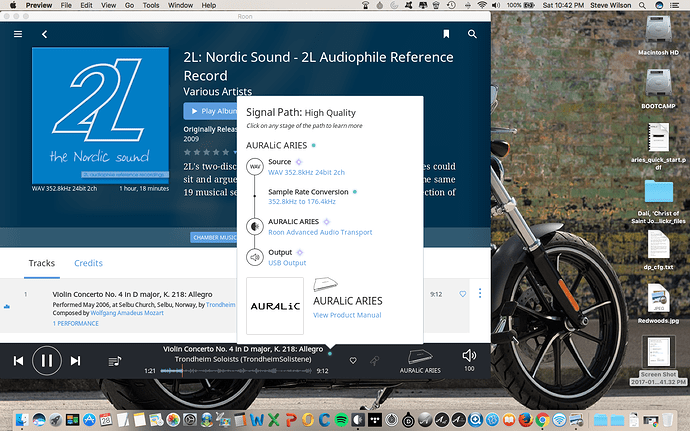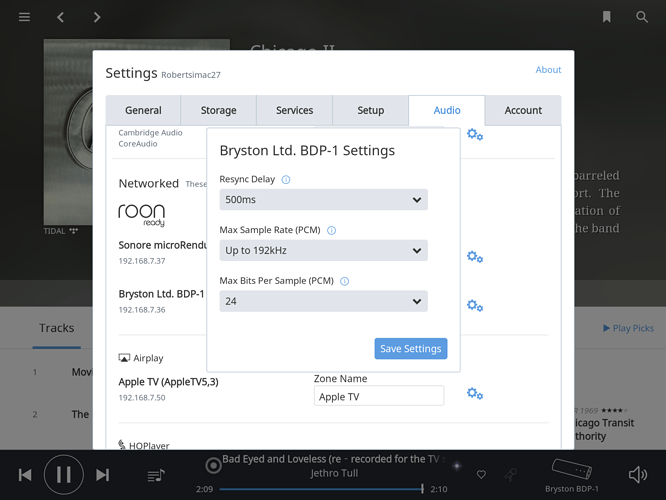I have noticed that Roon is down sampling, from 352.8kHz 24 bit to 176.4kHz not sure why - screen shot attached - any ideas?
Roon would be looking at the capability of the USB DAC to determine how it behaved. What DAC are you using?
I’m guessing Auralic Aries but I could be way out.
.sjb
You could be…
Its a Deveialet Expert 200 and your right, specs as follows - thanks.
PREAMPLIFIER & MAIN DAC
Patented Magic Wire Digital / Analogue Converter, D/A T.I. PCM1792
Unique high-precision MasterClock with very low jitter: 2ps rms
Conversion of all inputs into 24-bit/192 kHz
Built-in DSD / PCM conversion
SAM profile via configurator allowing the precise adaptation of the sound signal to the specifications of your speakers
Available active filtering on all analogue outputs via configurator
Volume control in increments of 0.5 dB
Volume adjustment range: -97.5 dB to +30.0 dB
Bypass/pass-thru mode available input by input
Balance adjustment
Tone control: bass +/-18 dB, treble +/-18 dB with variable frequency cut-off via configurator
Thinking about this some more just wondering why the down sampling is happening before reaching the Aries (which supports 352.8) and not between the Aries and the Expert?
The ceiling of the Expert 200 's capability is 192/24. Feed it anything above and it will down sample it to the nearest integer of 44 or 48. DSD would be converted to PCM and down sampled. The Aries is a streamer. Unlike it’s smaller sibling, the Mini, it doesn’t have a DAC on board so although Roon recognises it, what matters is the DAC and not the capabilities of the streamer unless the streamer itself was the bottleneck.
Several reasons why it is done this way:
Roon has more CPU resources available to do a high quality sample rate conversion than an embedded device like the Aries.
In general, our architecture centralizes heavyweight processing activity at the core, and leaves playback hardware doing as little work as possible.
Less data moving over the network is always going to be more reliable, so if the sample rate has to bottleneck at 192kHz or less, there are benefits to having that conversion happen earlier rather than later.
Making device manufacturers responsible for this sort of DSP is not practical–there are over 50 Roon Ready products certified the moment (and more coming), from all different sorts of teams/companies. Not all of them have the expertise to take on DSP development, and not all devices have powerful enough CPUs to do it well (or at all). Nearly every device would be making performance/quality tradeoffs to get it done, and given the performance disparities between Core hardware and virtually all Roon Ready devices, the tradeoff wouldn’t be in the right direction.

